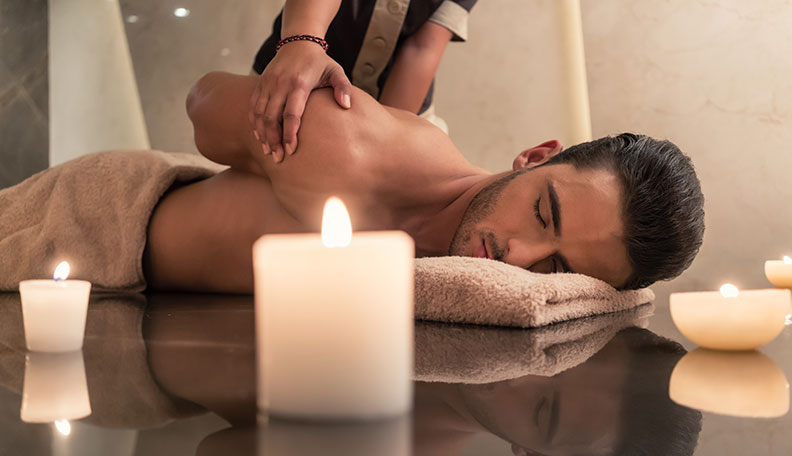Swedish massage, also known as classic massage, is a popular form of therapeutic massage that originated in Sweden. It is designed to relax the entire body by applying gentle pressure to muscles and joints. This article explores the benefits of Swedish massage, the techniques used, and provides a step-by-step guide to performing it.
Introduction
In today’s fast-paced world, stress and tension have become common issues for many people. Swedish massage offers a holistic approach to relaxation and rejuvenation. It involves the manipulation of soft tissues, promoting increased blood flow and the release of tension. Whether you’re looking to relieve muscle soreness, reduce stress, or simply pamper yourself, Swedish massage can be an excellent choice.
What is Swedish Massage?
Swedish massage is a therapeutic technique that involves the application of different strokes, such as long gliding motions, kneading, and circular movements. The main goal is to promote relaxation, improve circulation, and relieve muscle tension. It is typically performed on a massage table using oil or lotion to reduce friction and provide a smooth glide.
Benefits of Swedish Massage
Swedish massage offers numerous benefits for both the body and mind. Here are some of the key advantages:
- Relaxation: Swedish massage promotes deep relaxation, allowing you to unwind and reduce stress levels.
- Pain Relief: The techniques used in Swedish massage can help alleviate muscle pain and stiffness, reducing discomfort.
- Improved Blood Circulation: The gentle pressure applied during the massage stimulates blood flow, enhancing oxygen and nutrient delivery to the muscles.
- Enhanced Flexibility: By targeting specific muscle groups, Swedish massage can improve flexibility and range of motion.
- Mental Well-being: The soothing nature of the massage can promote mental clarity, reduce anxiety, and improve overall mood.
Techniques Used in Swedish Massage
Swedish massage incorporates a variety of techniques to achieve its therapeutic effects. Here are some commonly used techniques:
- Effleurage: This technique involves long, gliding strokes with the palms, thumbs, or fingertips. It helps warm up the muscles and increase blood circulation.
- Petrissage: Petrissage involves kneading, rolling, or squeezing the muscles. It helps relieve tension, break down knots, and improve muscle elasticity.
- Friction: Friction involves deep circular or transverse movements applied to specific areas. It can help release adhesions and promote healing.
- Tapotement: Tapotement includes rhythmic tapping, cupping, or hacking movements. It is often used to invigorate the muscles and stimulate the nervous system.
- Vibration: Vibration techniques use rapid shaking or trembling motions to loosen muscles and promote relaxation.
Step-by-Step Guide to Swedish Massage
Performing a Swedish massage requires skill and knowledge. Here’s a step-by-step guide to help you get started:
- Prepare the Environment: Create a calm and comfortable space by dimming the lights, playing soft music, and ensuring the room temperature is pleasant.
- Prepare Yourself: Wash your hands thoroughly, trim your nails, and warm the massage oil or lotion before beginning the massage.
- Please communicate with the Recipient: Talk to the person receiving the massage to understand their preferences, any specific areas of concern, and their comfort level.
- Start with Effleurage: Begin by applying long, gliding strokes along the back using the palms of your hands. Gradually increase the pressure as the muscles warm up.
- Apply Petrissage: Kneading and squeezing motions on the larger muscle groups, such as the shoulders, thighs, and buttocks.
- Incorporate Friction and Tapotement: Apply circular friction motions on specific areas of tension or knots. Follow this with gentle tapping or hacking movements to invigorate the muscles.
- Finish with Effleurage: End the massage with a series of long, calming strokes to promote relaxation and a sense of well-being.
Precautions and Considerations
While Swedish massage is generally safe for most individuals, there are some precautions and considerations to keep in mind:
- Medical Conditions: If you have any underlying medical conditions, such as blood clotting disorders or recent injuries, consult a healthcare professional before receiving a massage.
- Pregnancy: Pregnant women should inform their massage therapist to ensure proper modifications and avoid potential risks.
- Allergies: If you have allergies or sensitivities to certain oils or lotions, inform the therapist to ensure they use a suitable alternative.
- Discomfort: If you experience discomfort or pain during the massage, immediately communicate with the therapist.
- Hydration: Drink plenty of water after the massage to flush out toxins and rehydrate the body.
Frequently Asked Questions
Q. How long does a Swedish massage session usually last?
A. A typical Swedish massage session lasts between 60 to 90 minutes, but shorter or longer sessions can be arranged based on individual preferences.
Q. Can Swedish massage help with chronic pain?
A. Yes, Swedish massage can provide relief from chronic pain by reducing muscle tension, increasing blood flow, and promoting relaxation.
Q. Is Swedish massage suitable for everyone?
A. Swedish massage is generally safe for most individuals, but it’s important to consult with a healthcare professional if you have any underlying medical conditions.
Q. How often should I get a Swedish massage?
A. The frequency of Swedish massages depends on personal needs and preferences. Some individuals may benefit from weekly sessions, while others may choose monthly or occasional treatments.
Q. Can I perform a Swedish massage on myself?
A. While it’s possible to perform some techniques on yourself, achieving the same level of relaxation and effectiveness can be challenging. It’s recommended to seek a professional massage therapist for the best experience.
Swedish massage offers a holistic approach to relaxation, providing numerous benefits for the body and mind. By incorporating various techniques, it can help alleviate muscle tension, promote blood circulation, and reduce stress levels. Whether you’re seeking a therapeutic treatment or a pampering experience, Swedish massage can be a valuable addition to your self-care routine.


I like all the content articles, I really cherished, I would like more information concerning this, due to the fact it is extremely great., Thank you regarding talking about.
https://clients1.google.com.kh/url?q=https%3A%2F%2Flasvegasgirldirectory.com